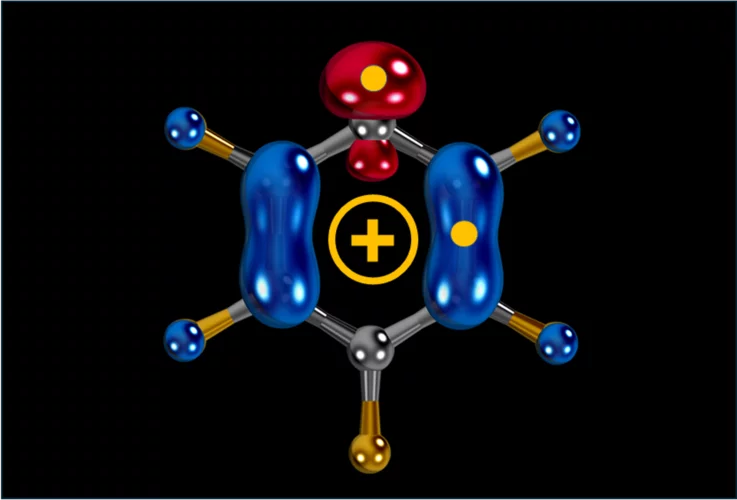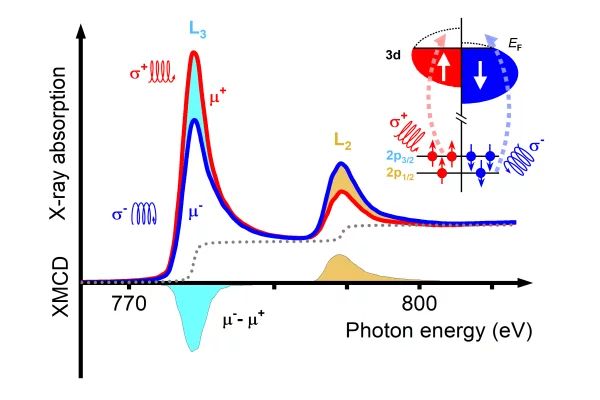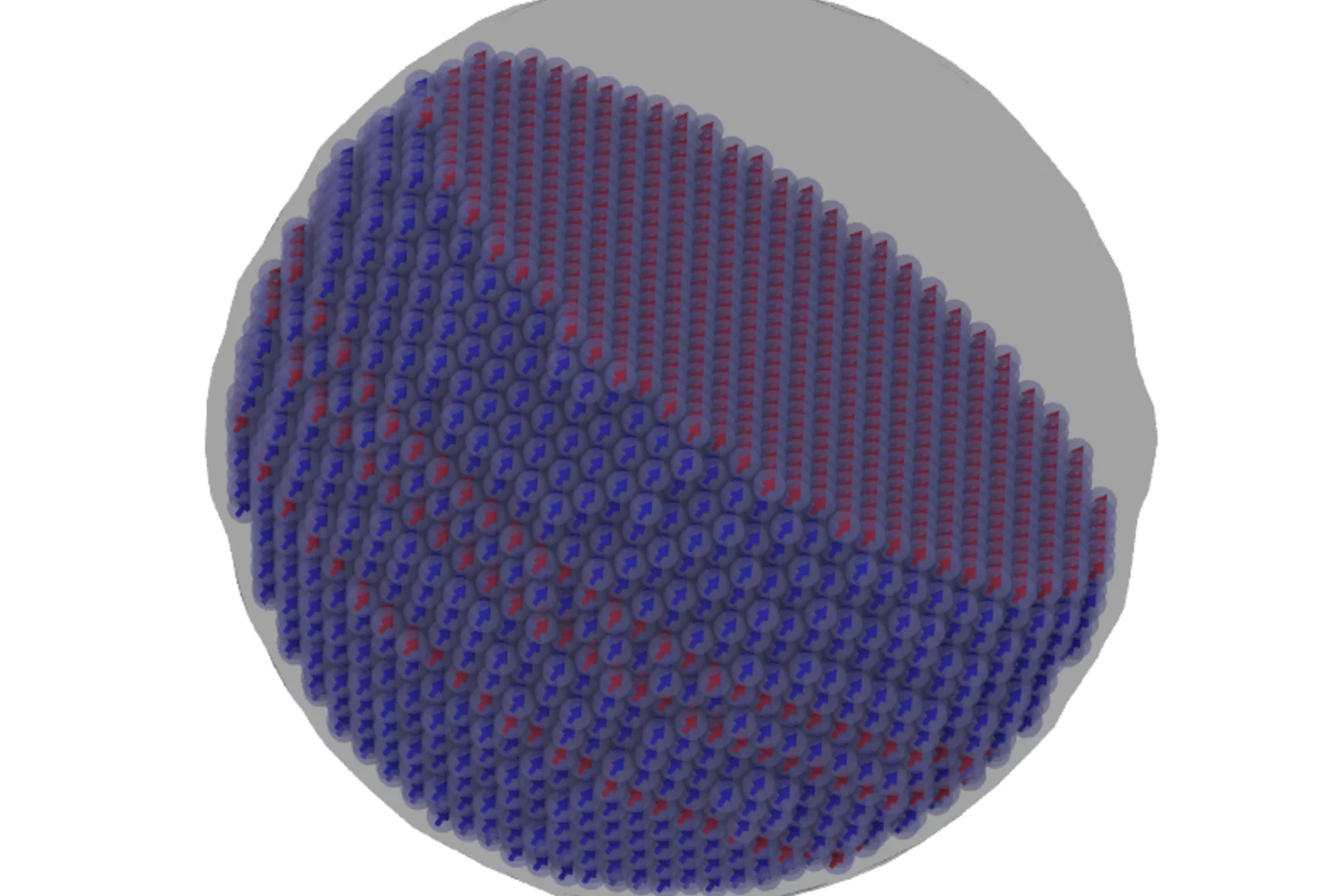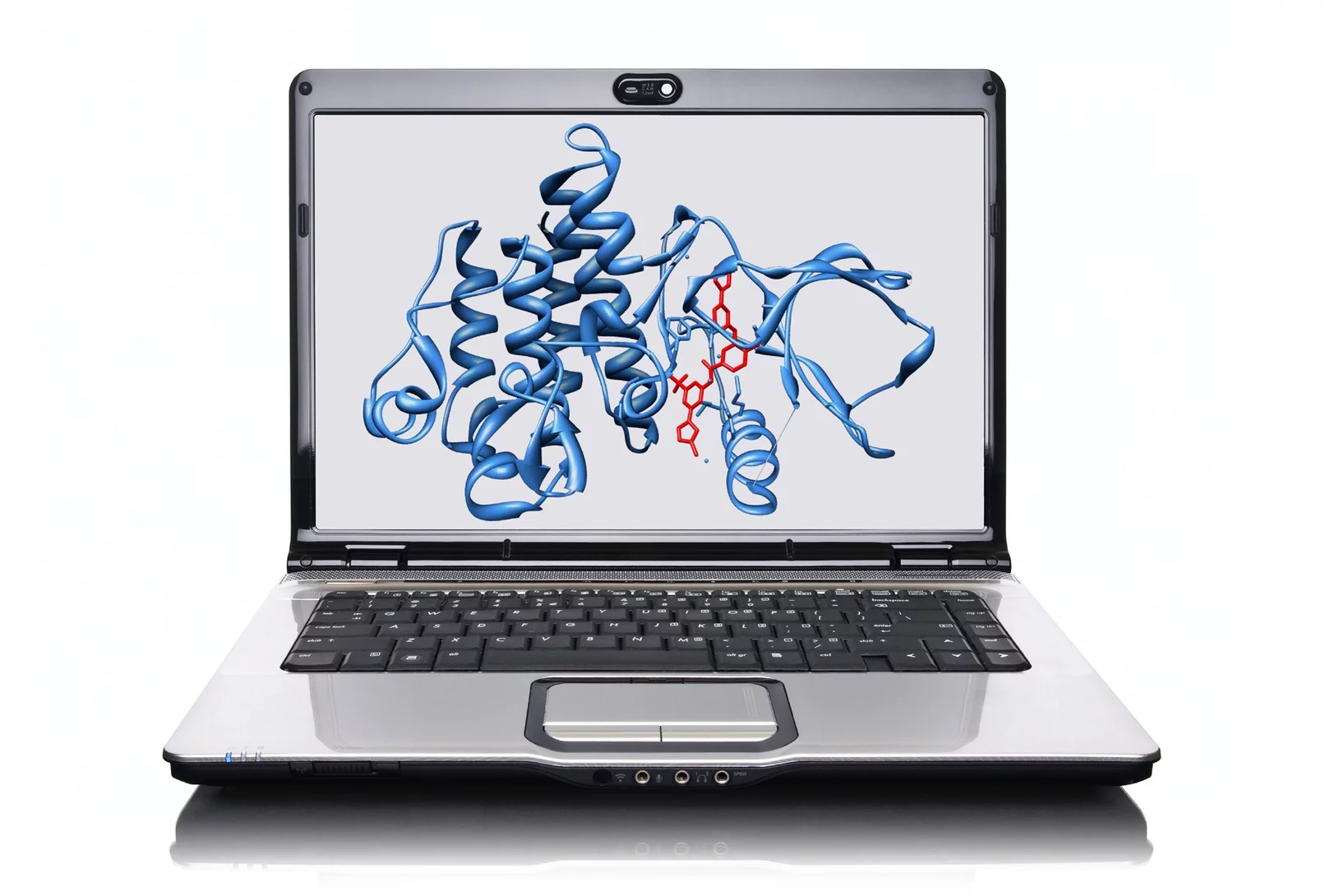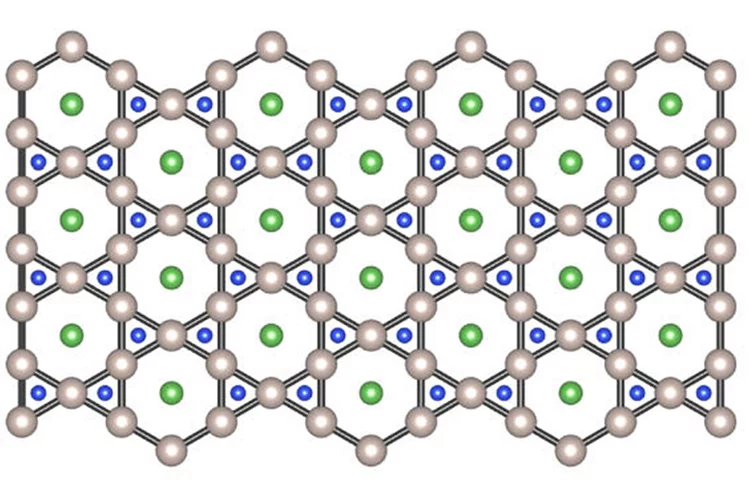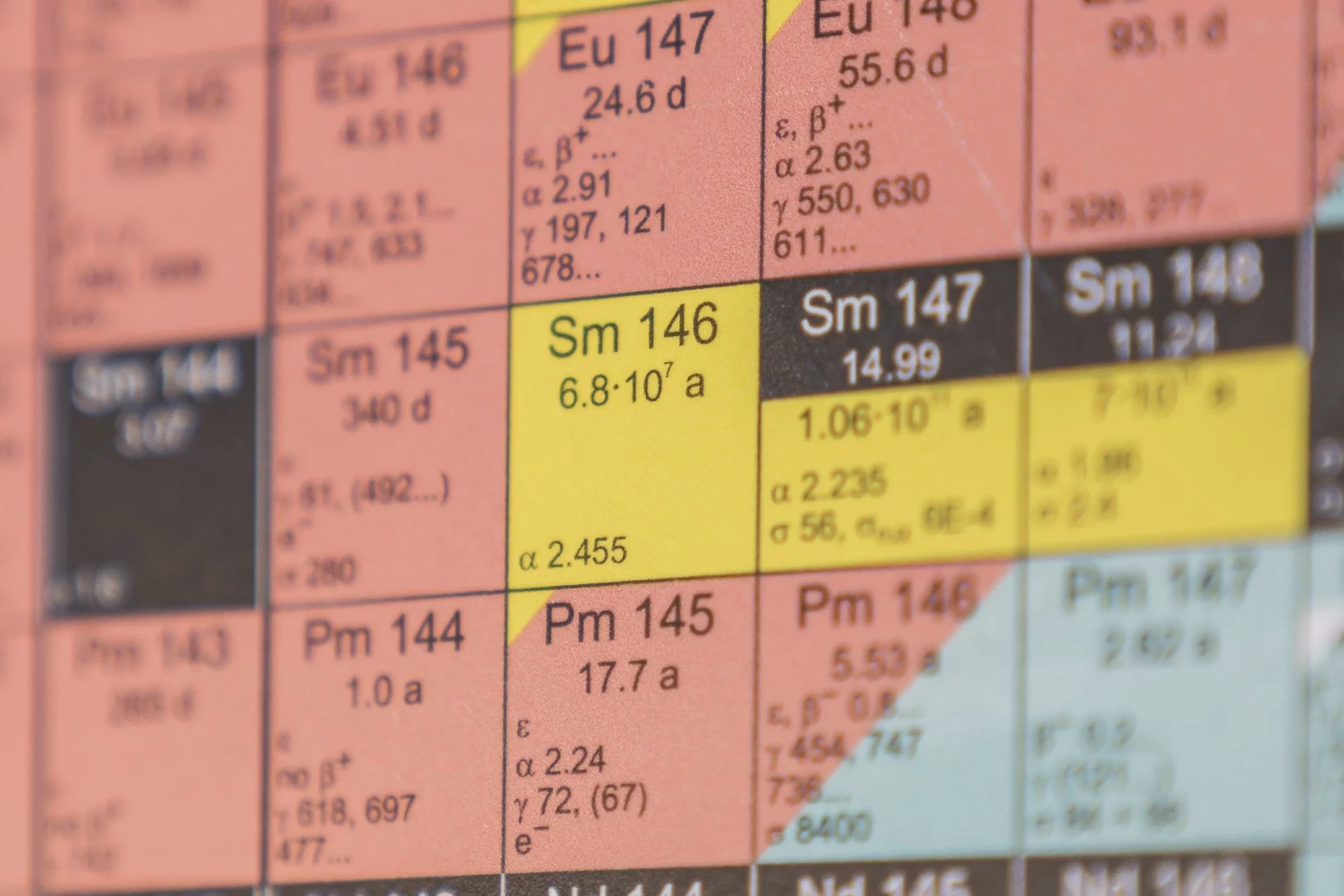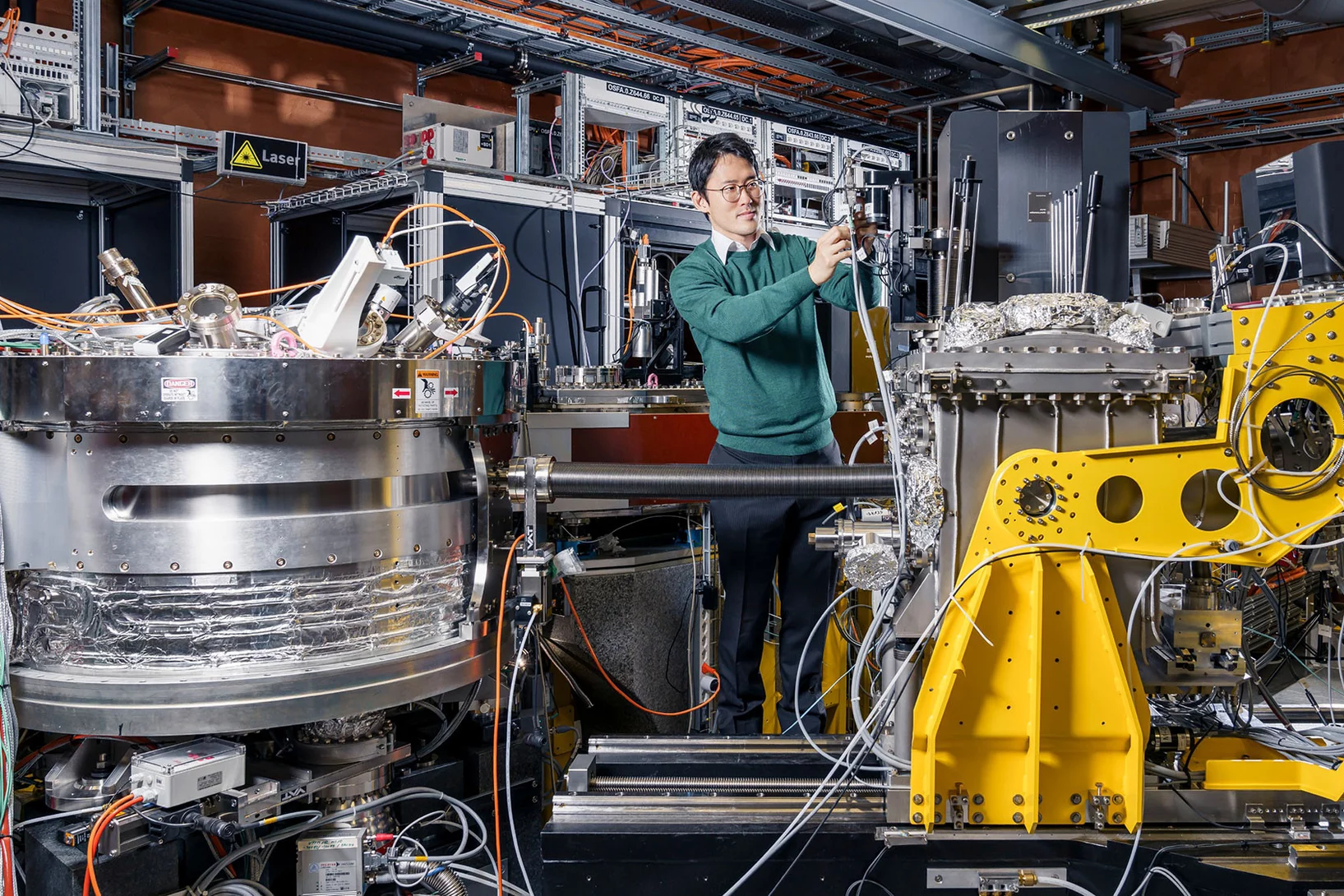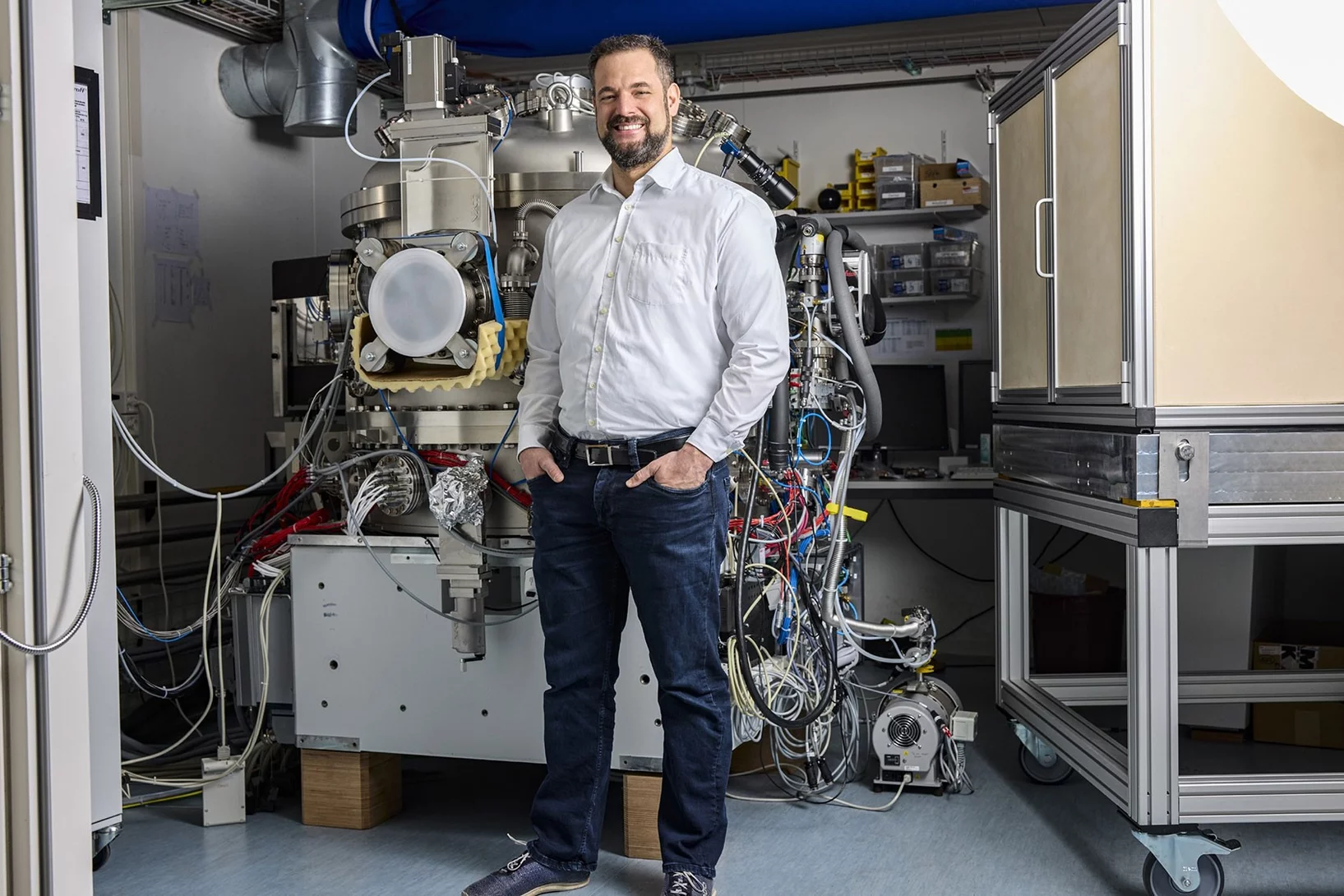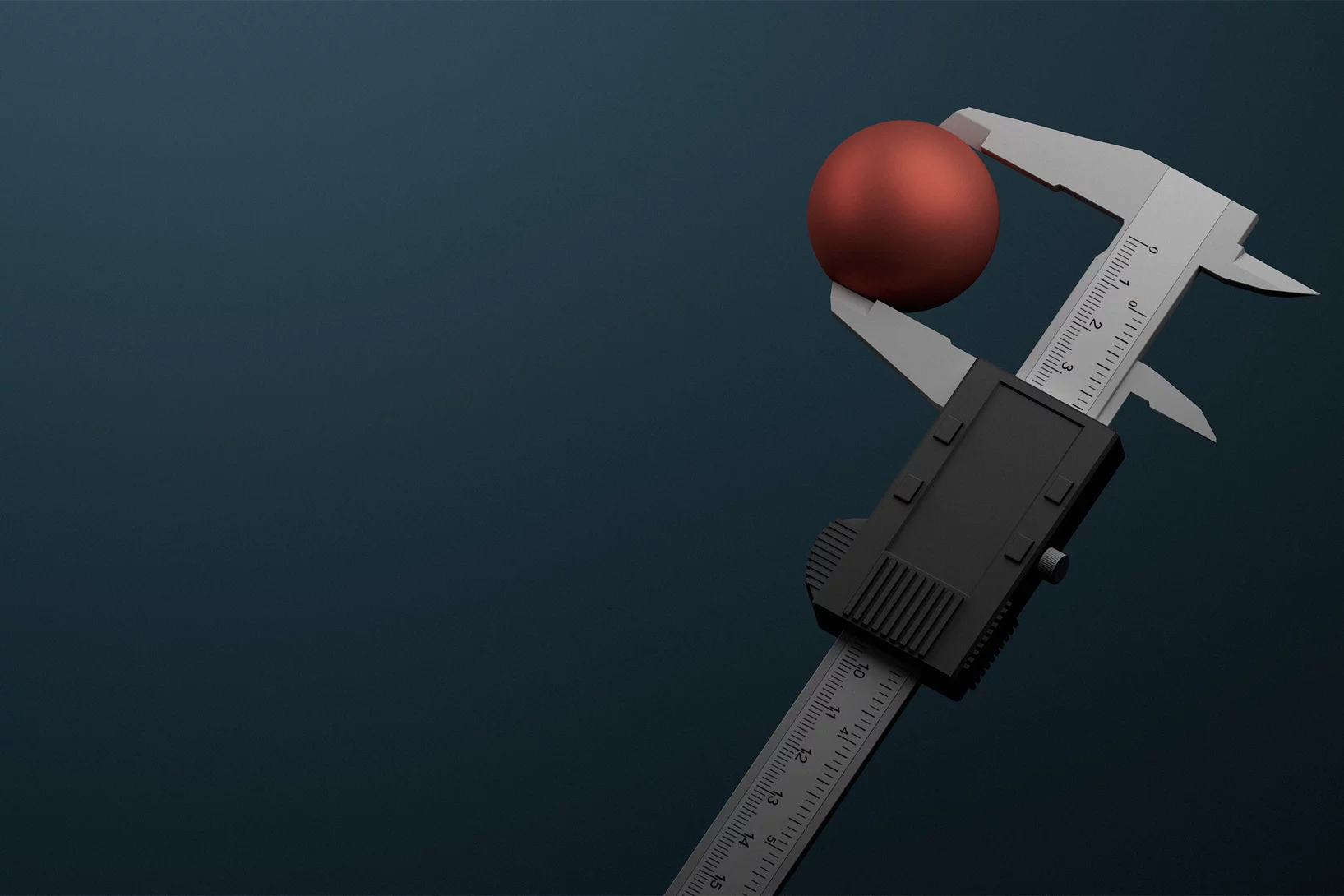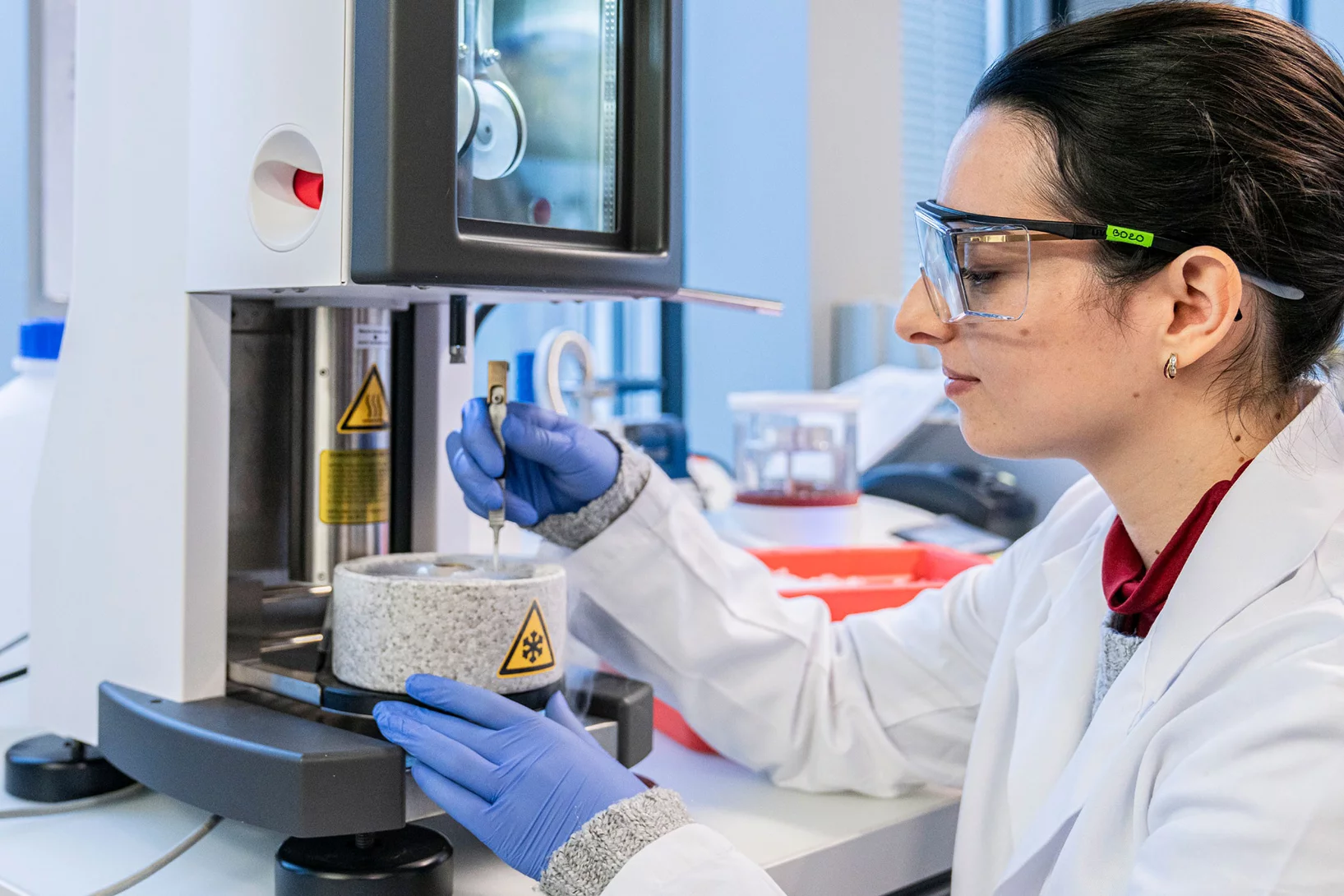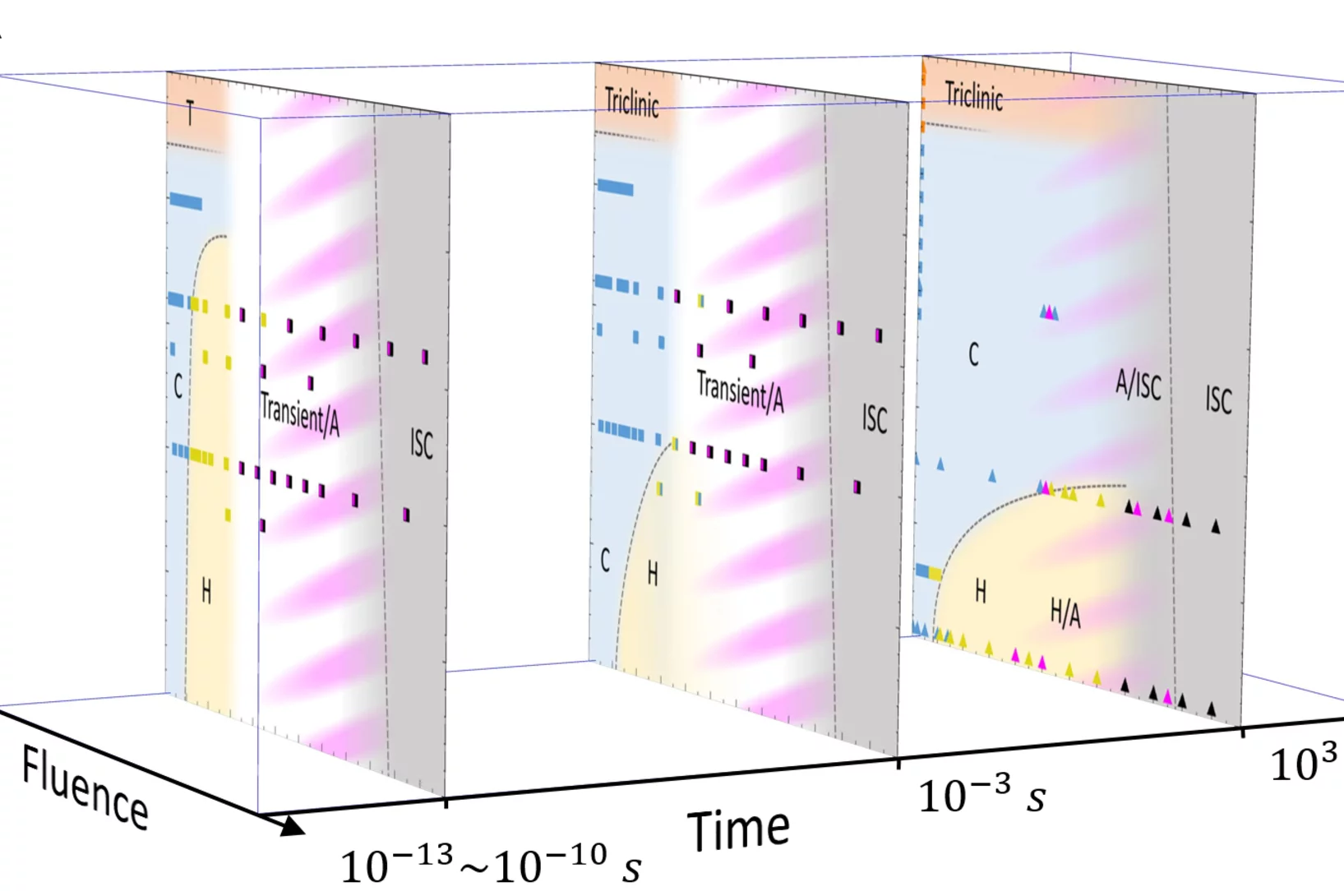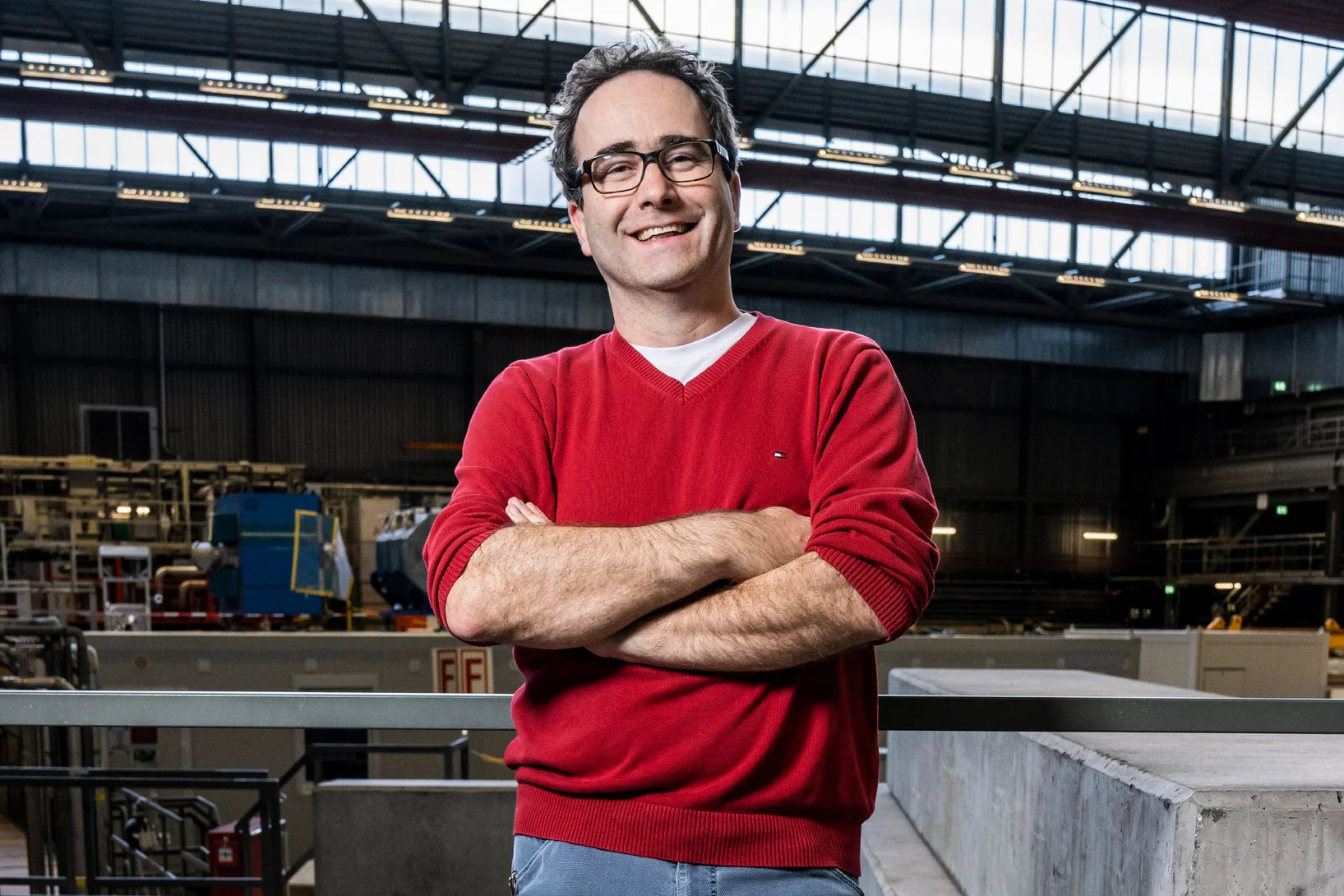Show filters
Measuring How Molecules Communicate
A collaboration between PSI and the University of Vienna has resulted in a new experimental method that, for the first time, enables the direct measurement of partial charges in molecules. Partial charges are fundamental to understanding molecular structure, interactions, and reactivity, yet until now no general technique existed to determine them experimentally.
Carbocation, diradical, and superelectrophile in one molecule?
The pentafluorophenyl cation (C₆F₅⁺) breaks these rules with a borderline “crazy” reactivity.
Topological defects determine evolution of charge density wave phase transition
Total scattering signals collected at SwissFEL reveal the role of topological defects when switching properties of a charge density wave material. The defect formation and dynamics after laser excitation reveals new insights into the functionality of quantum materials.
Nouveaux jalons en physique nucléaire
Des scientifiques du PSI mesurent le rayon du noyau de l’hélium-3 muonique avec une précision inégalée à ce jour et mettent à l’épreuve les théories de la physique atomique.
Primer on X-ray magnetic circular dichroism
X-ray magnetic circular dichroism (XMCD) is a magneto-optical effect that describes the difference in absorption between left and right circularly polarized X-rays by a magnetized material. It has been widely applied to the study of magnetic systems and of magnetic phenomena and its unique capabilities make it a fundamental tool for the study of novel magnetic phenomena and new materials systems.
Defect structure controls the thermal magnetic switching rate of nano-sized metallic particles.
Past experiments done at the Paul Scherrer Institut, probed the thermal switching properties of nano-sized metallic magnetic particles
Generating a highly uniform magnetic field inside the magnetically shielded room of the n2EDM experiment
The central magnetic field of the n2EDM experiment based at PSI is of paramount importance for achieving the sensitivity goal. The necessary field homogeneity was recently demonstrated, as described here.
Bloc-notes, crayon et algorithmes
Dominik Sidler, physicien au PSI, développe des théories fondamentales pour des phénomènes restés inexpliqués à ce jour.
Subvention prestigieuse pour trois projets de recherche au PSI
Béton, catalyse chimique et quête d’une nouvelle physique: trois chercheurs du PSI ont reçu chacun un grant du Fonds national pour ces thèmes de recherche
Mapping the ecosystem of Wannier Functions software
A new review article, just published in Reviews of Modern Physics and highlighted on the journal cover, provides a map to the vast landscape of software codes that allow researchers to calculate Wannier functions, and to use them for materials properties predictions. The authors, from all over Europe and the USA, include two PSI scientists. After providing readers with the theoretical foundations on Wannier functions and their calculation, together with intuitive graphical schematics to explain what Wannier functions are, the authors map the existing Wannier codes and the key applications.
YBa1−𝑥Sr𝑥CuFeO5 layered perovskites: An attempt to explore the magnetic order beyond the paramagnetic-collinear-spiral triple point
Layered perovskites of general formula AA'CuFeO5 are characterized by the presence of spiral magnetic phases whose ordering temperatures 𝑇spiral can be tuned far beyond room temperature by introducing modest amounts of Cu/Fe chemical disorder in the crystal structure. This rare property makes these materials prominent candidates to host multiferroicity and magnetoelectric coupling at temperatures suitable for applications. Moreover, it has been proposed that the highest 𝑇spiral value that can be reached in this structural family ( ∼400 K) corresponds to a paramagnetic-collinear-spiral triple point with potential to show exotic physics. Since generating high amounts of Cu/Fe disorder is experimentally difficult, the phase diagram region beyond the triple point has been barely explored. To fill this gap we investigate here eleven YBa1−𝑥Sr𝑥CuFeO5 solid solutions (0≤𝑥≤1 ), where we replace Ba with Sr with the aim of enhancing the impact of the experimentally available Cu/Fe disorder. Using a combination of bulk magnetization measurements, synchrotron x-ray and neutron powder diffraction we show that the spiral state with 𝐤𝑠=(1/2,1/2,1/2±𝑞) is destabilized beyond a critical Sr content, being replaced by a fully antiferromagnetic state with ordering temperature 𝑇coll2≥𝑇spiral and propagation vector 𝐤𝑐2=(1/2,1/2,0). Interestingly, both 𝑇spiral and 𝑇coll2 increase with 𝑥 with comparable rates. This suggests a common, disorder-driven origin for both magnetic phases, consistent with theoretical predictions.
Fractional quasiparticles in three dimensions
Specific signatures of fractionalization have been observed in a three-dimensional system known as quantum spin ice.
Exact solution of the classical and quantum Heisenberg mean field spin glasses
We solve and elucidate the physics of quantum Heisenberg spins glasses, which governs the local moments in randomly doped, strongly correlated materials.
Déchiffrer l’énigme des protéines
Cette année, le prix Nobel de chimie est attribué à trois chercheurs qui ont contribué de manière déterminante à déchiffrer le code des protéines, ces importants éléments constitutifs de la vie. Mais pour que des applications puissent être développées à partir de ces connaissances, par exemple dans le domaine médical, des centres de recherche comme le PSI sont indispensables.
Discovery of charge order above roomtemperature in the prototypical kagome superconductor La(Ru1−xFex)3Si2
The kagome lattice is an intriguing and rich platform for discovering, tuning and understanding the diverse phases of quantum matter, crucial for advancing modern and future electronics. Despite considerable efforts, accessing correlated phases at room temperature has been challenging.
Computational marathon matches the efficiency of the AiiDA platform with the power of Switzerland Alps supercomputer
A group of researchers from the LMS lab at PSI has conducted a "hero run" on the new Swiss supercomputer, occupying it entirely for about 20 hours with calculations managed remotely by the AiiDA software tools. The run demonstrated the efficiency and stability of AiiDA, that could seamlessly fill the entire capacity of an exascale machine, as well as the performance of the Alps supercomputer, that has been just inaugurated. All the results will soon be published on the Materials Cloud.
Un élément «magique» remet en question le modèle de la synthèse nucléaire dans les étoiles
Des mesures surprenantes mènent sur la piste d’un processus inconnu.
Précision unique: nouvelle valeur pour la demi-vie du samarium-146
Des scientifiques du PSI et de l’Université nationale australienne ont déterminé la demi-vie du samarium 146 avec une très grande précision.
Nature’s sunscreen and other SwissFEL stories
From DNA repair to catalysts: how the Alvra experimental station at SwissFEL has developed into a special tool for biology and chemistry research.
Une bionanomachine pour la chimie verte
Des scientifiques du PSI ont caractérisé une enzyme bactérienne unique en son genre, qui permet une importante réaction chimique.
Charge fractionalisation observed spectroscopically
Quantum mechanics tells us that the fundamental unit of charge is unbreakable – but exceptions exist.
Altermagnetism proves its place on the magnetic family tree
Experiments at the Swiss Light Source SLS prove the existence of a new type of magnetism, with broad implications for technology and research.
Réparer de l’ADN endommagé avec la lumière du soleil
Les dommages infligés à l’ADN sont une cause du vieillissement, de la mort cellulaire et même du cancer. La capacité à réparer de l’ADN endommagé revêt donc une importance cruciale pour tous les organismes. Au SwissFEL du PSI, une équipe internationale de recherche vient d’étudier la manière dont la photolyase, une enzyme, utilise l’énergie de la lumière du soleil pour ce mécanisme de réparation.
The secret life of an electromagnon
SwissFEL sheds light on how lattice and atomic spins jiggle together.
A gold standard for computational materials science codes
The most comprehensive verification effort so far on computer codes for materials simulations.
Plongée dans le cytosquelette
Le cytosquelette est un petit prodige. Son exploration promet, entre autres, de nouvelles possibilités de traitement contre le cancer.
Décrypter les secrets du cerveau
Centre de recherche de pointe: des chercheurs du PSI reçoivent un subside de pointe des NIH américains pour mener des recherches sur le cerveau.
L’énigme des microgels a été élucidée
Des chercheurs du PSI et de l’Université de Barcelone ont réussi à expliquer de manière expérimentale l’étrange rétraction des microgels.
Hairy cells: How cilia’s motor works
Understanding this motion may help to tackle health problems that affect cilia, which range from fertility issues to lung disease and COVID-19.
Mirror, mirror on the wall…
…. Now we know there are chiral phonons for sure
Un algorithme pour des films de protéines plus nets
Un algorithme qui vient d’être développé permet d’analyser plus efficacement les mesures faites aux lasers à rayons X à électrons libres.
La chasse au rayon du proton
0,000 000 000 000 000 840 87 (39) mètre: c’est le nombre étonnant que des chercheuses et des chercheurs au PSI ont découvert pour le rayon d’un proton.
Ainsi débute la vision
Des chercheurs du PSI ont analysé ce qui se passait tout au début dans l’œil quand la lumière atteint la rétine.
Financement de 2 millions pour la quête d’une nouvelle physique
Philipp Schmidt-Wellenburg mettra sur pied une expérience inédite à une ligne de faisceau de muons du PSI.
CNRS movie on n2EDM
Our French collaborators and CNRS produced an excellent short movie about our common n2EDM experiment. The apparatus is currently being set up in
UCN Area South. The collaboration is on track for commissioning of the apparatus with neutrons towards the end of 2022.
How to get chloride ions into the cell
A molecular movie shot at PSI reveals the mechanism of a light-driven chloride pump
Mieux comprendre le sens de la vue
Des chercheurs du PSI ont mis en lumière la structure d’un élément important dans l’œil: le canal ionique CNG qui permet au signal visuel d’être transmis au cerveau.
Quantum billiards with correlated electrons
Our collaborators at the Jozef Stefan Institute – the leading author, Jan Ravnik, is now a PSI Fellow at LMN – report a study of the electron ordering in equilateral triangle structures via photoexcitation of the prototypical dichalcogenide 1T-TaS2.
A time-domain phase diagram of metastable quantum states
Our collaborators at the Jozef Stefan Institute – the leading author, Jan Ravnik, is now a PSI Fellow at LMN – report a ‘dynamical’ phase diagram of metastable quantum states generated via photoexcitation of the prototypical dichalcogenide material 1T-TaS2.
L’Infrastructure suisse pour la physique des particules CHRISP
Les chercheurs recherchent les écarts par rapport au modèle standard actuel de la physique et veulent savoir comment notre univers est construit.
La taille du noyau d’hélium a été mesurée avec une précision inégalée
Dans le cadre d’expériences conduites à l’Institut Paul Scherrer PSI, une collaboration internationale de recherche a mesuré le rayon du noyau de l’atome d’hélium de manière cinq fois plus précise que tous les chercheurs avant elle. Ce nouveau résultat permet de tester certaines théories fondamentales en physique.
Isolé du monde par blindage magnétique
A l’Institut Paul Scherrer PSI, des chercheurs ont construit une chambre magnétiquement isolée du reste du monde dont les performances sont uniques au niveau planétaire. Leur objectif est de résoudre l’une des dernières énigmes sur l’origine de la matière et de répondre à la question fondamentale: pourquoi la matière, et par conséquent l’homme, existent-ils au sein de l’univers?
Déformation inattendue d’une protéine
Des chercheurs du PSI ont découvert un secret du cytochrome c, que cette protéine vitale avait bien gardé jusque-là. Des mesures au laser à rayons X à électrons libres SwissFEL ont mis en évidence des modifications structurelles que la science avait pourtant exclues pour ce type de biomolécules.
Efficient analysis method for multiplet lines in Fourier space
In his first paper as lead author, LMN PhD student Adrian Beckert and co-authors demonstrate an algorithm which takes advantage of peak multiplicity to retrieve line shape information. The results were published in Optics Express and are relevant to a wide range of topics, ranging from neutron-scattering to spectroscopy of rare-earth doped solids.
A la recherche d’une nouvelle physique
L’accélérateur de protons à haute intensité HIPA permet à l’Institut Paul Scherrer PSI de produire des particules élémentaires pour élucider la structure de notre univers. Les chercheurs utilisent des pions, des muons et des neutrons pour vérifier la validité du modèle standard de la physique des particules.
De l’hélium pionique avec une longue durée de vie: première preuve expérimentale de l’existence d’une matière exotique
Les atomes exotiques, où des électrons ont été remplacés par d’autres particules, permettent de scruter en profondeur l’univers quantique. Au terme de huit ans de travail, une équipe internationale de chercheurs a réussi une expérience difficile à la source de pions du PSI: créer un atome artificiel appelé «hélium pionique».
Sur la piste de l’énigme de la matière
A la source de neutrons ultra-froids du PSI, des chercheurs ont mesuré une propriété du neutron avec une précision inégalée à ce jour: son moment dipolaire électrique. Aujourd’hui encore, on cherche en effet à comprendre pourquoi il est apparu plus de matière que d’antimatière après le Big Bang.
Des ciseaux moléculaires stabilisent le cytosquelette de la cellule
Des chercheurs de l’Institut Paul Scherrer PSI ont identifié une importante partie du cycle qui régule le montage et le démontage du cytosquelette en observant des ciseaux moléculaires au travail à l’aide de la Source de Lumière Suisse SLS.


